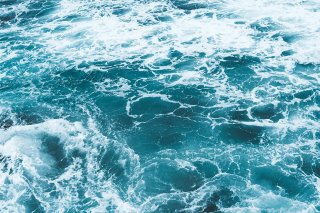Climate Change Impacts on the Ocean and Marine Resources
Overview
The ocean is an essential part of the global environment. It influences climate and weather around the world and is home to millions of different forms of life.1 Thriving marine ecosystems provide Americans with food, medicines, jobs, and recreation. The ocean also connects people to nature and is critical to some Indigenous cultures.
-

Coral bleaching. Coral reefs are home to many sea creatures. When water is too warm or too cold, coral becomes damaged in a process called bleaching. If bleaching goes on for too long, it can kill the coral.34
-

Dead Zones. Harmful algal blooms (HABs), sometimes called red tides, have been linked to increasing temperatures in the Atlantic and Pacific Oceans. Some species of cyanobacteria can produce excessive amounts of biomass that can prevent light from getting below the ocean surface. As these organisms die and decompose, oxygen levels go down, making it harder for other organisms to survive. Other species of HABs can produce toxins that are hazardous to marine life and humans.
-
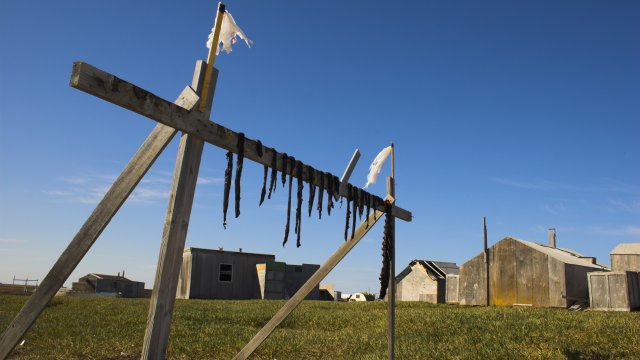
Threats to subsistence fishing. Salmon and other types of fish are an essential part of subsistence fishing in Alaska. Climate change is making it difficult for Indigenous people to practice fishing traditions.
-

Wildlife impacts. A 2014 marine heatwave caused the death of many sea lions.33 The warm water caused the fish that the sea lions eat to move elsewhere. As a result, thousands of sea lion pups starved.
-
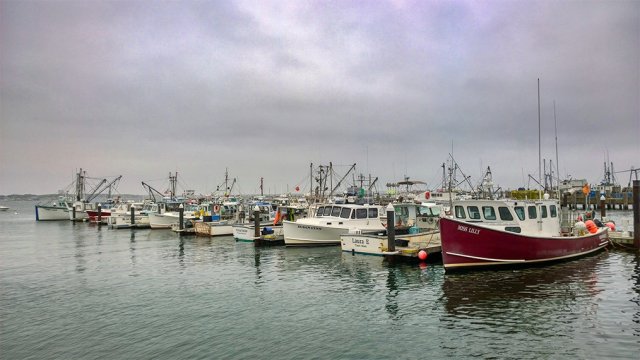
Decreases in commercial fishing harvests. America’s East Coast is projected to see a 20% to 30% decrease in fish harvests by 2060.34 Climate change will drive fish further north as waters heat up.
Increasing emissions of greenhouse gases into the atmosphere from the burning of fossil fuels are causing changes in the ocean (see box). These changes can alter which species of marine life thrive best in certain areas. For example, many fish have shifted their typical range as water temperatures rise.2 However, other species are expected to decline in number or leave areas that are no longer favorable for them.3 These shifts can have significant impacts on marine ecosystems and on fishing communities.4
Many climate change impacts will only be avoided by reducing carbon dioxide emissions.5 Climate-driven changes in the ocean are motivating people to find solutions to the new challenges. For example, new forecast tools are helping predict changes in ocean conditions that can help the fishing industry adapt. Many organizations are working together to protect coral reefs, which face hazards such as bleaching, infectious diseases, smothering from sediment, collapses in fish stocks, and other issues. Such strategies can help preserve and protect marine resources. Even with these efforts, however, it will take decades or longer for the ocean to recover.
Explore the sections on this page to learn more about climate impacts on the ocean and marine resources:
- Top Climate Impacts on the Ocean and Marine Resources
- The Marine Environment and the Economy
- Population Impacts
- What We Can Do
- Related Resources
Top Climate Impacts on the Ocean and Marine Resources
Climate change affects the ocean in many ways. Three key impacts are described in this section.
1. Changes in Ocean Ecosystems
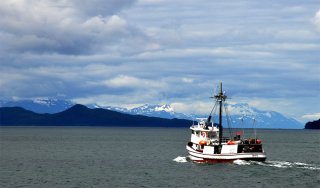
Climate changes to the physical and chemical makeup of the ocean have significant impacts on marine ecosystems. For example, water temperature influences which species can live in an area. Acidification affects many animals’ ability to make shells or skeletons, while low oxygen levels can contribute to hypoxia, or dead zones. Warm temperatures can exacerbate the effects of both acidification and hypoxia.6
Impacts on one species can ripple across an entire ecosystem. For example, plankton—tiny organisms at the bottoms of many marine food chains—are sensitive to water temperatures and oxygen concentrations. They can die off if the water gets too warm. Animals farther up the food chain, like whales, can suffer food shortages when this happens.
Climate changes to the marine environment will come in many forms. For instance, the diversity of some temperate ecosystems is expected to increase.7 But overall, climate change is projected to disrupt marine ecosystems in ways that reduce the services they provide and their diversity of life.8
2. More Common and Severe Extreme Marine Events
Rising water temperatures, acidification, and low oxygen levels can combine with natural ocean cycles to create extreme marine events. Marine heat waves, dead zones, and coral bleaching are just a few examples of these events, which are projected to become more common and severe.10 Extreme events can harm marine ecosystems and communities connected to these systems. For example, a large heat wave off the West Coast in 2014 shut down crab fisheries and starved baby sea lions.11
3. Impacts on Marine Fisheries
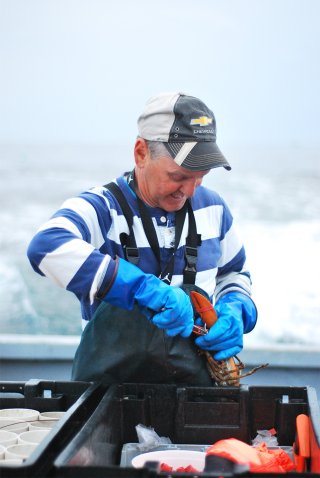
Commercial and recreational marine fisheries in some regions are at high risk from climate-driven changes in the size and distribution of fish populations.12 Some fish species have already altered their geographic range in response to climate change. For example, pollock and cod are moving north to colder water as local ocean temperatures rise.13
The movement of fish into new areas disrupts the ecosystems that they move into. It can also cause confusion about what fishing regulations apply.14 Changes in where fish live may also mean boats have to travel further from ports, potentially increasing costs.15
Climate change is also affecting the timing of seasonal events, which can affect fisheries. For example, some species, such as striped bass, are spawning earlier in the year.16 This means that catches can peak earlier than normal. Fisheries will need to adapt to such changes or risk reduced catches and lost revenues, which can also increase prices for consumers.17
Changes in the locations and number of fish species in the ocean can present new opportunities in some cases. For example, scientists predict that some areas, such as the Bering Sea, will see more kinds of fish as warming waters drive populations north.18 This could lead to new fishing opportunities and economic growth in that region.
For more specific examples of climate change impacts in your region, please see the National Climate Assessment.
The Marine Environment and the Economy
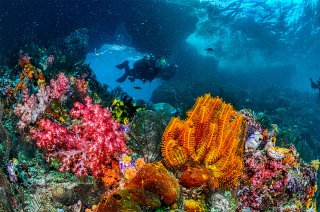
Many U.S. industries depend on the ocean. The marine economy generated over $476.2 billion, or 1.8 percent of U.S. gross domestic product (GDP) in 2022. 20 Tourism and recreation accounted for almost half of that total.
Commercial fisheries are an important contributor to the economy. In 2022, they produced 8.4 billion pounds of seafood valued at $5.9 billion.21 Other businesses, such as grocery stores, tackle shops, and restaurants, also benefit from fishery-related products and services.
As of 2022, almost 2.4 million Americans had jobs related to the ocean in fields including fisheries, construction, tourism, real estate, food service, and transportation.22 The Atlantic and Pacific Oceans are both key trade channels for importing and exporting goods.23 The United States also extracts oil, gas, sand, and gravel from the ocean.
The ocean also provides many benefits that are harder to measure in economic terms. These are called ecosystem services. Carbon storage, water filtration, and shoreline protection are just a few of the many ecosystem services that the ocean provides.
Population Impacts
Healthy oceans provide Americans with food and employment and are important to cultural traditions. Climate change leaves communities that depend on the ocean vulnerable to hardship. Many fishing communities already experience high rates of poverty.24 Unstable fish populations and market pricing can hurt fishing communities’ earnings. This is especially true if a community depends on a single species for their livelihoods.
Ocean health is a cornerstone of many Indigenous cultures. Native American, Pacific Islander, and Alaska Native communities often practice subsistence fishing.25,26 Fluctuating fish populations can lead to food insecurity for rural Alaskan villages, where many people depend on locally caught fish for a large portion of their diet.27 For example, populations of Chinook and chum salmon hit record lows in 2021, leading to the closure of subsistence salmon fishing for much of the year.28 The number of shellfish, another important part of subsistence diets, has also been declining due to ocean acidification.29
Climate change also affects Indigenous people culturally. Gathering and preparing food provide social, spiritual, and economic benefits for Indigenous communities.30,31 Disruptions to subsistence practices have negative health outcomes such as anxiety disorders and feelings of isolation.32
What We Can Do
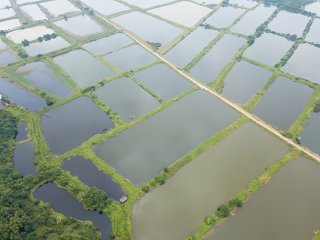
We can help reduce the impact of climate change on the marine environment in many ways, including the following:
- Adapt fishery management. Fishing professionals and government officials can help people adapt to climate change by changing policies and practices to avoid overfishing and maintain healthy marine ecosystems.
- Diversify fisheries. Aquaculture, or seafood farming, helps build resilience against climate change.
- Reduce energy use. Everyone can take steps to lower carbon emissions, which can help reduce ocean warming and acidification.
- Shop sustainably. Plan your meals with sustainably harvested seafood to keep ocean ecosystems healthy. These are fish and shellfish that have been caught using sustainable techniques and management practices.
- Recreate responsibly. Help protect coral reefs. When boating, be careful not to let anchors damage coral reefs or seagrass beds. Never touch coral reefs when diving or snorkeling. Also avoid using sunscreens containing chemicals that can harm marine life.
See additional actions you can take, as well as steps that companies can take, on EPA’s What You Can Do About Climate Change page.
Related Resources
Fifth National Climate Assessment, Chapter 10: “Ocean Ecosystems and Marine Resources.”
- Climate Change Indicators in the United States: Oceans.
- National Oceanic and Atmospheric Administration (NOAA) Fisheries. Manages fisheries around the nation and provides resources to professional and recreational fishers.
- National Estuary Program. Provides information about the location and function of U.S. estuaries, where freshwaters mix with saltwater from the sea.
- Ocean and Coastal Acidification. Explains the causes and effects of acidification.
- Fish and Shellfish Advisories. Provides information on safe eating guidelines and explains how advisories are formed.
- NOAA: Gulf of America Hypoxia Watch. Monitors levels of dissolved oxygen in the waters of the Gulf of America.
Endnotes
1 National Oceanic and Atmospheric Administration (NOAA). (2017). Marine life counts: The U.S. marine biodiversity observation network. National Ocean Service. NOAA Ocean Podcast: Episode 35. Retrieved 3/7/2022.
2 Mills, K.E., E.B. Osborne, R.J. Bell, C.S. Colgan, S.R. Cooley, M.C. Goldstein, R.B. Griffis, K. Holsman, M. Jacox, and F. Micheli, 2023: Ch. 10. Ocean ecosystems and marine resources. In: Fifth National Climate Assessment. Crimmins, A.R., C.W. Avery, D.R. Easterling, K.E. Kunkel, B.C. Stewart, and T.K. Maycock, Eds. U.S. Global Change Research Program, Washington, DC, USA. https://doi.org/10.7930/NCA5.2023.CH p. 10-5.
3 Mills, K. E., et al. (2023). Ch. 10: Oceans and marine resources. Fifth National Climate Assessment. U.S. Global Change Research Program, Washington, DC, p. 10-5.
4 Mills, K. E., et al. (2023). Ch. 10: Oceans and marine resources. Fifth National Climate Assessment. U.S. Global Change Research Program, Washington, DC, pp. 10-5- 10-7
5 Mills, K. E., et al. (2023). Ch. 10: Oceans and marine resources. Fifth National Climate Assessment. U.S. Global Change Research Program, Washington, DC, p. 10-15
6 Pershing, A.J., R.B. Griffis, E.B. Jewett, C.T. Armstrong, J.F. Bruno, D.S. Busch, A.C. Haynie, S.A. Siedlecki, and D. Tommasi, 2018: Oceans and Marine Resources. In Impacts, risks, and adaptation in the United States: Fourth national climate assessment, volume II [Reidmiller, D.R., C.W. Avery, D.R. Easterling, K.E. Kunkel, K.L.M. Lewis, T.K. Maycock, and B.C. Stewart (eds.)]. U.S. Global Change Research Program, Washington, DC, USA, pp. 353–390. doi: 10.7930/NCA4.2018.CH9, p. 362.
7 Pershing, A.J., et al. (2018). Ch. 9: Oceans and marine resources. In: Impacts, risks, and adaptation in the United States: Fourth national climate assessment, volume II. U.S. Global Change Research Program, Washington, DC, p. 357.
8 Mills, K. E., et al. (2023). Ch. 10: Oceans and marine resources. Fifth National Climate Assessment. U.S. Global Change Research Program, Washington, DC, p. 10-4.
9 Mills, K. E., et al. (2023). Ch. 10: Oceans and marine resources. Fifth National Climate Assessment. U.S. Global Change Research Program, Washington, DC, p. 10-11.
10 Pershing, A.J., et al. (2018). Ch. 9: Oceans and marine resources. In: Impacts, risks, and adaptation in the United States: Fourth national climate assessment, volume II. U.S. Global Change Research Program, Washington, DC, p. 372.
11 Mills, K. E., et al. (2023). Ch. 10: Oceans and marine resources. Fifth National Climate Assessment. U.S. Global Change Research Program, Washington, DC, p. 10-8.
12 Mills, K. E., et al. (2023). Ch. 10: Oceans and marine resources. Fifth National Climate Assessment. U.S. Global Change Research Program, Washington, DC, p. 10-11.
13 Mills, K. E., et al. (2023). Ch. 10: Oceans and marine resources. Fifth National Climate Assessment. U.S. Global Change Research Program, Washington, DC, p. 10-11.
14 Pershing, A.J., et al. (2018). Ch. 9: Oceans and marine resources. In: Impacts, risks, and adaptation in the United States: Fourth national climate assessment, volume II. U.S. Global Change Research Program, Washington, DC, p. 362.
15 Pershing, A.J., et al. (2018). Ch. 9: Oceans and marine resources. In: Impacts, risks, and adaptation in the United States: Fourth national climate assessment, volume II. U.S. Global Change Research Program, Washington, DC, p. 364.
16 Pershing, A.J., et al. (2018). Ch. 9: Oceans and marine resources. In: Impacts, risks, and adaptation in the United States: Fourth national climate assessment, volume II. U.S. Global Change Research Program, Washington, DC, p. 362.
17 Mills, K. E., et al. (2023). Ch. 10: Oceans and marine resources. Fifth National Climate Assessment. U.S. Global Change Research Program, Washington, DC, p. 10-12.
18 Pershing, A.J., et al. (2018). Ch. 9: Oceans and marine resources. In: Impacts, risks, and adaptation in the United States: Fourth national climate assessment, volume II. U.S. Global Change Research Program, Washington, DC, p. 362.
19 NOAA. (N.D.). Northeast fish and shellfish climate vulnerability assessment. NOAA Fisheries. Retrieved 3/18/2022.
20 U.S. Department of Commerce. (2022). Marine economy satellite account, 2017–2021. Bureau of Economic Analysis. Retrieved 12/31/2024.
21 NOAA Fisheries. (2024). Fisheries of the United States, 2022. Retrieved 12/31/2024 from https://www.fisheries.noaa.gov/resource/document/fisheries-united-states-2022.
22 U.S. Department of Commerce. (2022). Marine economy satellite account, 2017–2021. Bureau of Economic Analysis. Retrieved 12/31/2024.
23 U.S. Department of Commerce. (N.D.). Maritime services. International Trade Administration. Retrieved 3/18/2022.
24 National Marine Fisheries Service. (2024). Fisheries Economics of the United States, 2022. U.S. Dept. of Commerce. NOAA Tech. Memo. NMFS-F/SPO-248A.
25 U.S. Environmental Protection Agency (EPA). (2016). Guidance for conducting fish consumption surveys(pdf) (5.5 MB). Retrieved 3/7/2022.
26 NOAA. (2025). Recreational and Non-Commercial Fishing in the Pacific Islands. NOAA Fisheries. Retrieved 2/13/2025.
27 Falke, J., Ward, E. M., et al. (2023). Ch. 29: Alaska. Fifth National Climate Assessment. U.S. Global Change Research Program, Washington, DC, p. 29-37.
28 Schoen, E.R. et al. Divergent Responses of Western Alaska Salmon to a Changing Climate. NOAA Arctic Report Card. Retrieved 1/14/2025.
29 Markon, C., et al. (2018). Ch. 26: Alaska. In: Impacts, risks, and adaptation in the United States: Fourth national climate assessment, volume II. U.S. Global Change Research Program, Washington, DC, p. 1205.
30 Jantarasami, L.C., et al. (2018). Ch. 15: Tribes and indigenous peoples. In: Impacts, risks, and adaptation in the United States: Fourth national climate assessment, volume II. U.S. Global Change Research Program, Washington, DC, p. 582.
31 Markon, C., et al. (2018). Ch. 26: Alaska. In: Impacts, risks, and adaptation in the United States: Fourth national climate assessment, volume II. U.S. Global Change Research Program, Washington, DC, p. 1205.
32 Whyte, K., et al. (2023). Ch. 16: Tribes and indigenous peoples. Fifth National Climate Assessment. U.S. Global Change Research Program, Washington, DC, p. 16-10.
33 Pershing, A.J., et al. (2018). Ch. 9: Oceans and marine resources. In: Impacts, risks, and adaptation in the United States: Fourth national climate assessment, volume II. U.S. Global Change Research Program, Washington, DC, p. 366.
34 Pershing, A.J., et al. (2018). Ch. 9: Oceans and marine resources. In: Impacts, risks, and adaptation in the United States: Fourth national climate assessment, volume II. U.S. Global Change Research Program, Washington, DC, p. 363.

